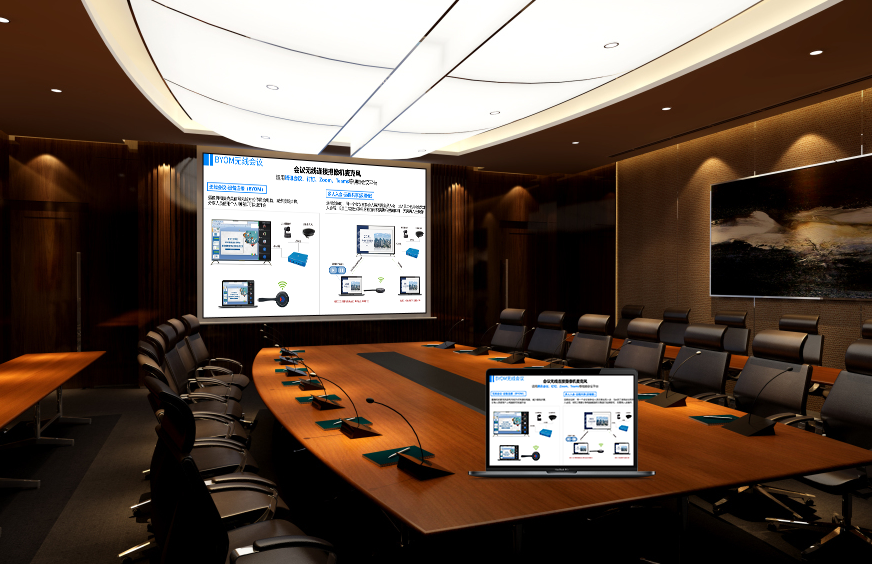With the deepening of collaboration models, the standards for enterprises to select
meeting screen mirroring systems are upgrading. What core requirements must a future-oriented system meet?
The system should support simultaneous screen mirroring for multiple users (at least 4 people) and allow screen layout switching. This facilitates comparative discussions of different content.
The system can easily divide multiple screen mirroring channels. It allows different teams to collaborate in independent spaces first, then share collectively later—this is a key function to stimulate innovation.
It must support mainstream protocols such as Miracast, AirPlay, and DLNA. This ensures seamless connection for any employee’s mobile phone or computer, regardless of device type or system.
The host can broadcast, switch, or end screen mirroring with one click. This allows full control over the meeting rhythm and avoids chaotic content switching.
It should have functions like guest network isolation and screen mirroring permission management. These features protect business secrets and prevent unauthorized access to internal data.
Connection steps should be simplified to “one-click press” or “scan a QR code to connect.” This minimizes the technical threshold for users, ensuring everyone can operate it easily.
- When multiple users conduct multi-screen interaction, the device must maintain low latency and high stability to avoid lag or disconnection that disrupts the meeting.
- It should support 4K ultra-high-definition output to ensure clear display of detailed content such as design drafts and code, preventing information loss due to blurriness.
An excellent meeting screen mirroring system is not just a display tool, but a catalyst for an enterprise’s collaborative culture. Choosing a system that supports multi-screen interaction and group discussions is an investment in the enterprise’s future competitiveness.

